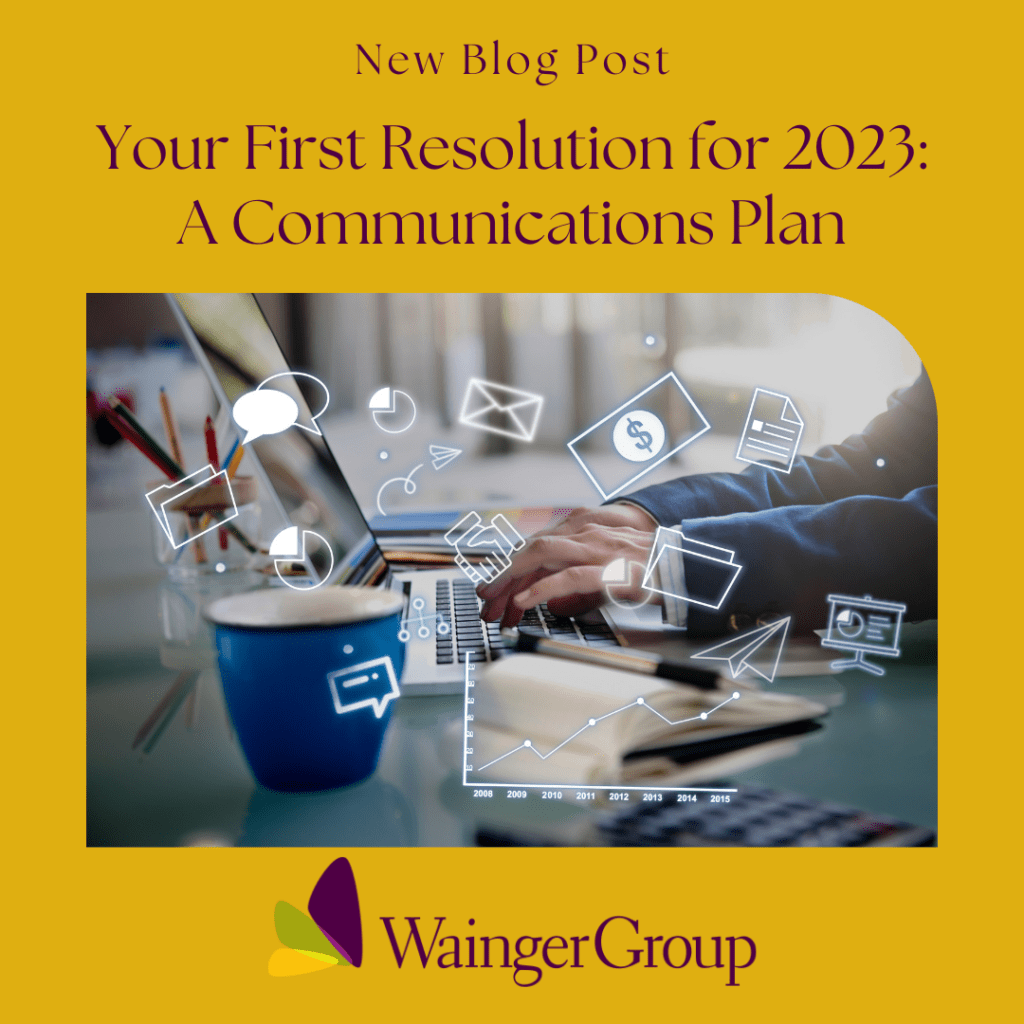
It’s that time of year again. No, we’re not talking about eggnog and holiday cheer, although “tis the season.” Rather, it’s communications planning time! Don’t have one? Maybe this is the year to create one. And if you do have one, it’s time to examine how well you did against this past year’s efforts and what adjustments you would make for the coming 12 months.
Operating without a communications plan is like driving to an unknown destination without GPS or a map. You may get where you want to go but you will probably waste a lot of time, gas, and emotional energy on the way.
A good communications plan lets you identify key priorities, with the people and materials you will need to address these priorities, and keep you on track to support your organization’s overall goals and objectives. Effective communication is essential in winning new customers or donors, recruiting, and retaining great employees, influencing key audiences, and keeping pace with change. It’s too important to approach in a haphazard way.
Creating a communications plan can feel overwhelming. But don’t look at your roadmap as another box to check. Instead, think of it as a useful tool to move you and your organization forward. Here are a few steps to follow to create a great communications plan.
Identify Organizational Goals. What is your organization trying to achieve in the next year? In the next three years? Ask yourself what’s changed inside your enterprise since your last plan. Are you about to launch a new product? Have you enhanced a service you already offer? Have you reduced your employee base and therefore have new processes to deliver on your brand promise? As a result of any change, what do you want your audience to do now? What do you want to happen after you deliver your messages? Sure, you’d like to make more money or increase donations and support, but what steps will you need to take to achieve those goals? Make sure your communications plan fits what you want to accomplish today.
Understand Your Audience. If this is your first plan, identify your target audiences and prioritize them. If you already have a plan, ask yourself whether your key audiences remain exactly the same since that plan was first drafted? Even if the demographics for your audiences remain unchanged, the ways in which they can hear and engage with you probably have. And remember that the “general public” is not a specific audience. To hone in who your audience really is, imagine a composite individual (or several of them) and examine how their daily activities can connect with your organization. It’s a worthwhile exercise, especially if you engage your team and ask each member to define a unique composite audience member. You might be surprised at their perspectives.
Hone in on Your Key Messages. Your organization must grapple with rapid change and, no doubt, there is change inside and outside your organization. Are the messages you have been sending still relevant? Do they reflect today’s performance and goals and your current brand and personality? Consider undertaking a message development update so your audiences can hear, understand, and engage with you.
Decide the Best Vehicles Through Which to Engage Your Publics. Just as technology needs constant updates, so do the vehicles with which you deliver your messages need to match where your enterprise is today. By some estimates, nearly 85 percent of Americans are online. That’s a staggering shift from just a few years ago. And every day it seems, there are new channels. But is your audience visiting Facebook or just playing Candy Crush? Make sure the ways in which you’re reaching out are keeping pace with the people you most want to reach.
Decide How Best to Measure Success. How will you know if you’re hitting the mark with your messages and vehicles? You’ll need tactics that help you wisely deploy resources while reaching and connecting with the broadest possible impact. Technology can help here; so can demographic studies that focus on marketing and reach. Be willing to invest in resources to help you monitor effectiveness. It will pay off. Then make sure you check back in frequently enough to keep your messages and means of delivering them on target. Don’t fall into the trap of just measuring media hits or web clicks. That shows activity that is only part of the story. The other piece is whether that activity actually moves the bigger needle–sales growth, increased donations, influencing action or policy.
Get Buy-In from Within. The final and possibly most important touch-point for your plan is an evaluation of how many people are actually using it. All too often organizations overlook the internal piece of communications planning, focusing on the “brand jewelry,” the external communications messages and tools such as websites, collateral, social media, etc. The internal buy-in is where the rubber meets the road. Did you involve key internal stakeholders in the development of the plan? Does your entire team believe in and understand what they’re being asked to communicate? Can they effectively and consistently articulate what you do and how your organization is powerful and unique? Internal communications and training are as essential as the external when it comes to forging a plan that truly works.
Making the investment in a communications plan is as important as your financial, growth and legal strategies. Like all good plans, modifications may need to be made throughout the year to respond to unforeseen events. The plan should be reviewed at least quarterly and adjustments made if necessary. Remember, this is the map that will help your organization reach its destination, with fewer wrong turns and higher impact.
Wainger Group has developed a communications plan template to help you get started. If you would like a copy, reach out to info@waingergroup.com. There is a for profit and nonprofit version so please specify.

